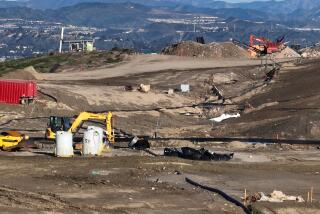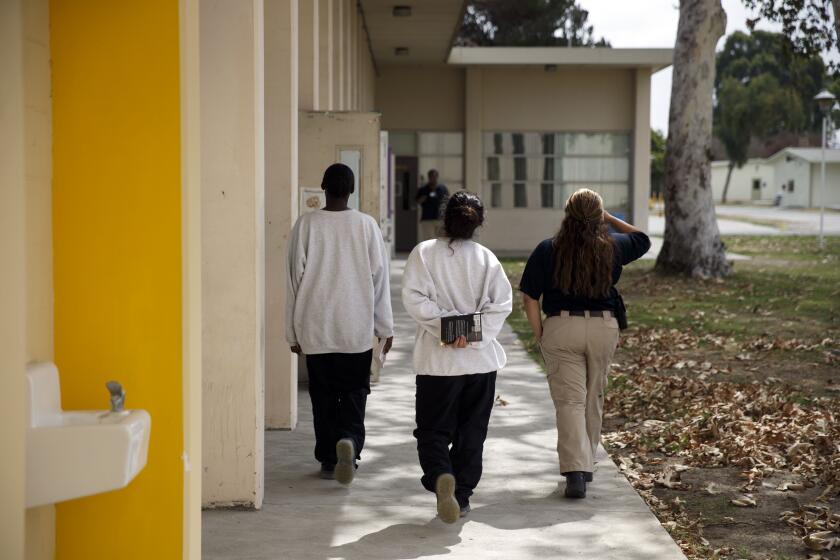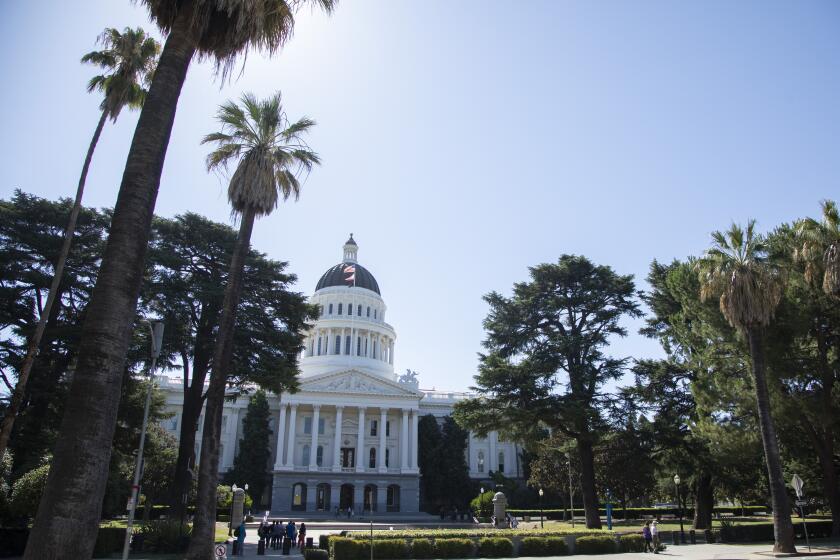Huge Exxon Mobil explosion a reminder of refinery dangers

A large explosion Wednesday at the Exxon Mobil refinery in Torrance sent flames into the air, injuring four and leaving residents with a stark reminder of the dangers that come with living in the South Bay’s refinery zone.
The blast occurred at about 8:50 a.m., rattling residents, shattering some windows and forcing students at 14 nearby schools to remain indoors. Seismologists said the power of the blast was the equivalent of a 1.4 magnitude earthquake. It sent a ash-like substance into nearby neighborhoods.
When firefighters arrived at the refinery, Torrance Capt. Steve Deuel said, they found flames likely fueled by gasoline.
When the fire was finally put out, a destructive scene emerged. Portions of the refinery structure were mangled by the force of the explosion, which left debris scattered and two vehicles badly damaged.
Still, the vast majority of the sprawling facilities continued to operate as normal.
The cause of the blast has not been determined, but it occurred in one of the plant’s electrostatic precipitators, which are housed in a unit that had been shut down for maintenance in a process known as a turnaround, according to California Division of Occupational Safety and Health spokeswoman Erika Monterroza.
Standing 12-stories high and weighing more than 1,000 tons, the electrostatic precipitators reduce ammonia and particulate emissions and were installed to comply with environmental regulations imposed by the South Coast Air Quality Management District, according to company documents.
Cal/OSHA has shut down the fluid catalytic cracker, the larger unit that houses the affected equipment, citing the hazard. Operations will resume when the company can demonstrate it can safely run the unit -- a process that could take days, weeks, or months, Monterroza said.
Turnarounds are considered one of the most potentially dangerous processes at a refinery, which spurred State Sen. Loni Hancock to propose Senate Bill 1300, a law approved in September that requires refineries to file schedules of planned turnarounds.
The law took effect Jan. 1, but employers aren’t required to submit documentation on turnarounds like Wednesday’s until June 15, Monterroza said.
No harmful emissions were detected. But the South Coast AQMD, which was at the refinery assessing air quality, issued the smoke advisory for the area.
The refineries and other energy processing facilities that dot the South Bay have long been towering presences. There have been fewer destructive incidents in recent years. But during the 1980s and ‘90s, explosions and other accidents at refineries sparked protests and calls for stricter regulations.
In 1994, a gas explosion ripped through Mobil’s Torrance refinery, injuring 28 people, at least six seriously. In 1988, one person was killed and nine others were injured in a blast at the refinery. Some of the injured suffered serious burns.
In 1985, two people were killed and 45 injured when a chain of explosions from a gasoline-processing pump tore through an Atlantic Richfield refinery in Carson, sending 5,000-degree hydrogen flames shooting hundreds of feet into the air.
Torrance officials said they are trying to keep Wednesday’s blast in perspective.
“There certainly is a level of concern by the community,” said Mayor Patrick Furey, who lives just two blocks from the refinery. “Any time there’s an incident, it heightens our awareness.”
But Furey, who has lived in the South Bay city for more than 30 years, said he considers the explosion an anomaly -- and credits Exxon with implementing safety and community awareness programs during the last two decades.
“We mandate that they run a safe and secure property,” Furey said. “To be a good neighbor within the city limits, they have to be that way.”
Resident Gilbert Griego, 70, said he was watching television at home with his daughter-in-law and grandson when the house shook. He has lived near the refinery for about 65 years.
“My daughter-in-law thought it was an earthquake,” he said. “I didn’t think it was because I didn’t feel the ground move.”
But looking at the flames from his home, which sits near the intersection of Crenshaw and Del Amo boulevards, he said he’s seen worse.
He recalled an 1979 oil tank fire at the Mobil Oil facility that sits behind his house. He said that incident forced the evacuation of his neighborhood.
Times staff writers Tiffany Hsu and Rong-Gong Lin II contributed to this report.
More to Read
Start your day right
Sign up for Essential California for news, features and recommendations from the L.A. Times and beyond in your inbox six days a week.
You may occasionally receive promotional content from the Los Angeles Times.








